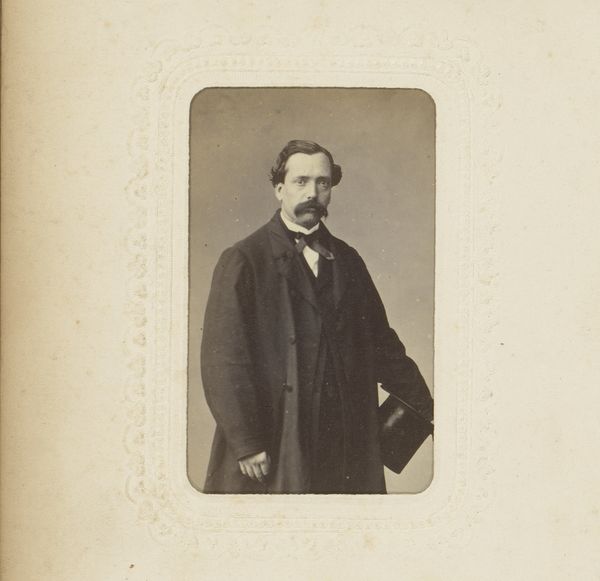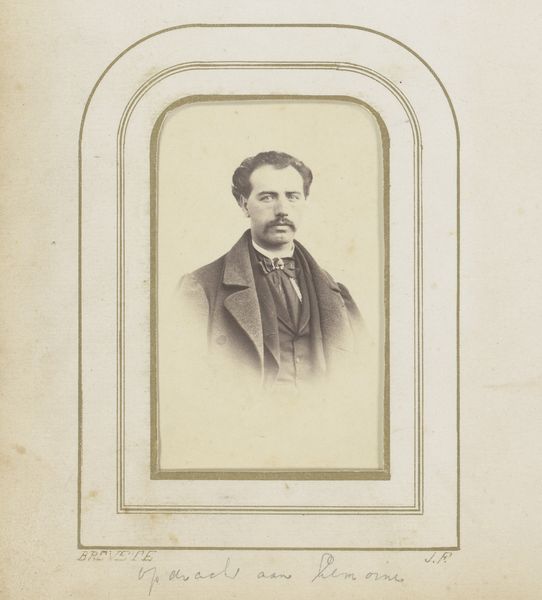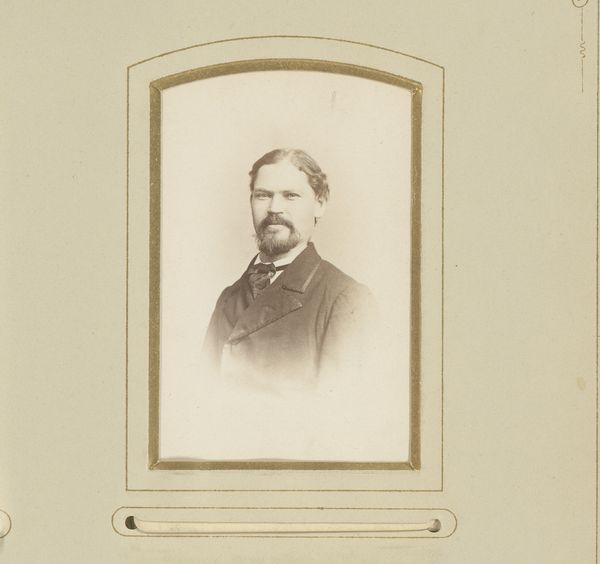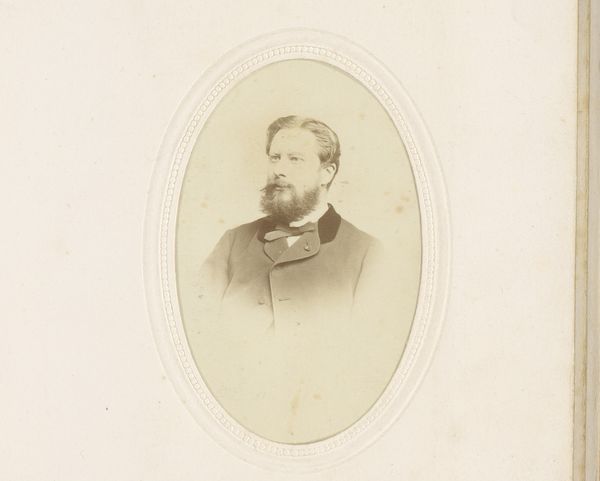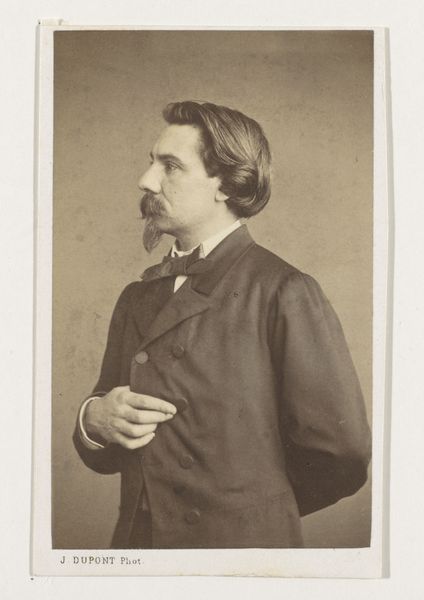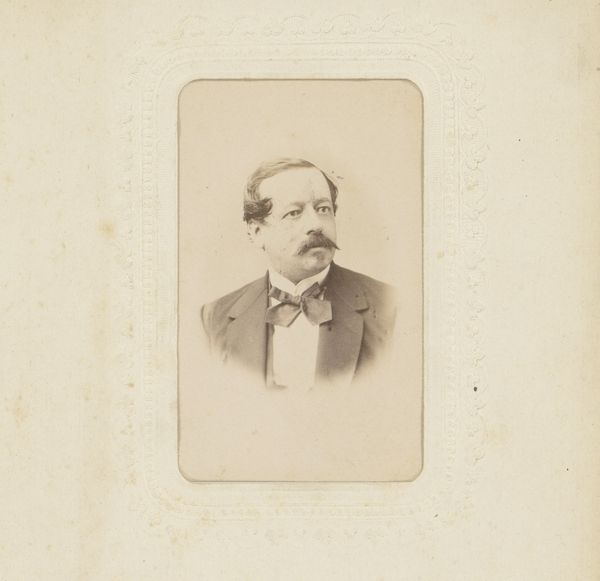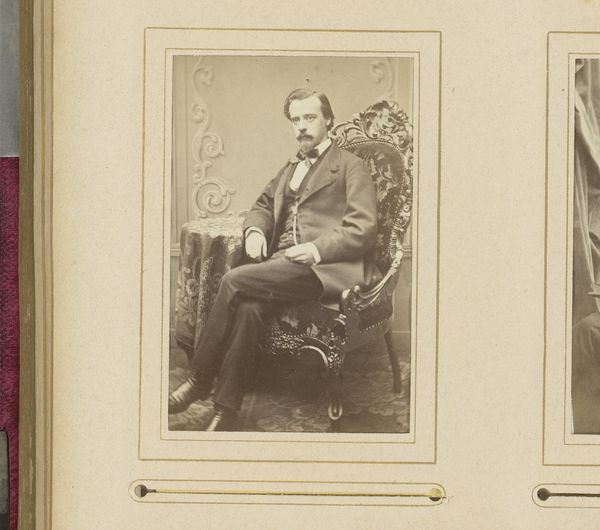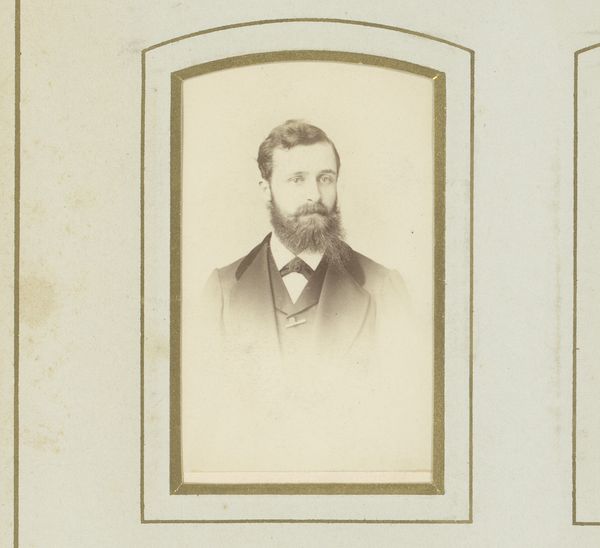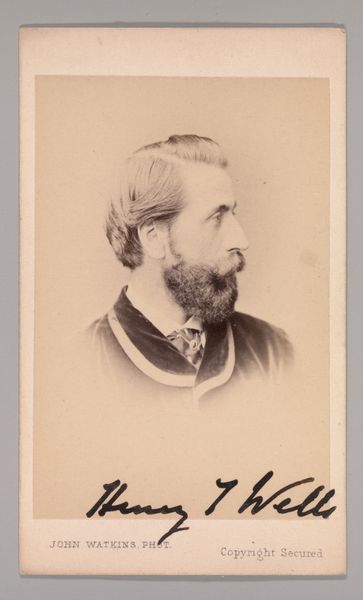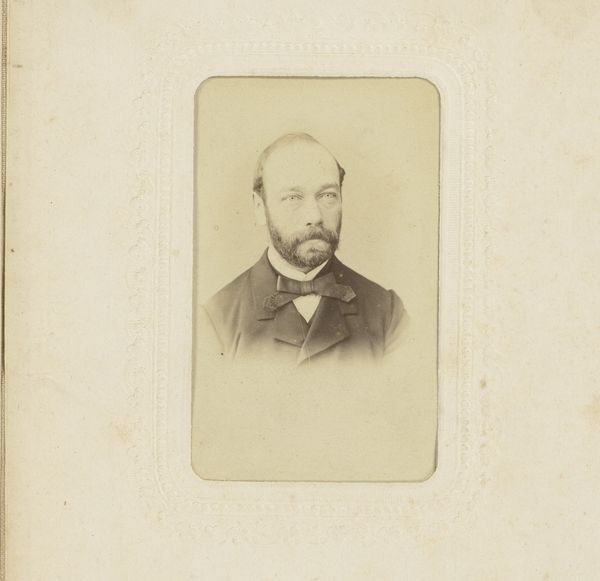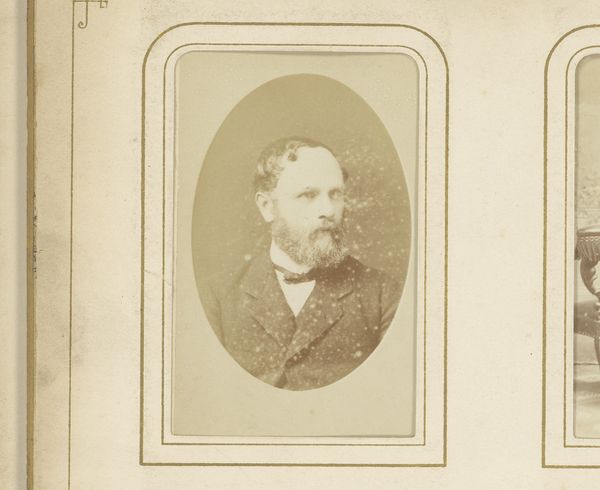
photography, gelatin-silver-print
#
portrait
#
photography
#
historical photography
#
gelatin-silver-print
Dimensions: height 103 mm, width 62 mm
Copyright: Rijks Museum: Open Domain
Editor: Here we have a "Portrait of a Seated Man," a gelatin silver print from sometime between 1852 and 1856, by T.S. Redman. The formality of it is interesting, and it also feels kind of distant, like peering into a different world. What catches your eye about this work? Curator: Considering this photographic print, I immediately look to the gelatin silver process itself. It wasn't simply about capturing an image. It speaks volumes about industrial and chemical advancements intersecting with artistic practice. The production required specific materials, a darkroom, skilled labor...it was a whole process. Editor: Right, it's not just pointing and shooting! I guess I hadn’t thought much about what goes into making an old photograph. Curator: Exactly! Think of the social context too. Early photography democratized portraiture, making it accessible beyond the wealthy elite who could commission painted portraits. Though, in reality, acquiring this kind of photography was a deliberate action; its own form of conspicuous consumption. Did it actually transform social hierarchies or just create another tier? Editor: So, it's accessible... but only to certain levels of society. What kind of considerations went into the act of posing that we don't really see as much today? Curator: Precisely. Posing like this wasn't arbitrary. It speaks to Victorian ideals of composure and respectability. The sitter's posture, attire, even his facial hair - these were consciously curated visual statements. Also, the photographer would carefully consider the props available. It makes you consider what kind of persona he sought to construct, doesn't it? Editor: Definitely makes me think about photography in a new way, not just as art but as social document. Thanks! Curator: Indeed, every element, from chemical compounds to the subject’s posture, reveals something about the values and material conditions of the time. That's the real art to discover.
Comments
No comments
Be the first to comment and join the conversation on the ultimate creative platform.
